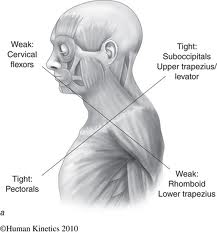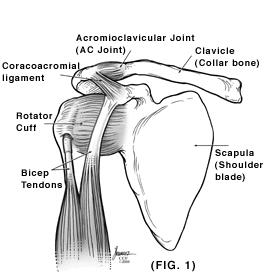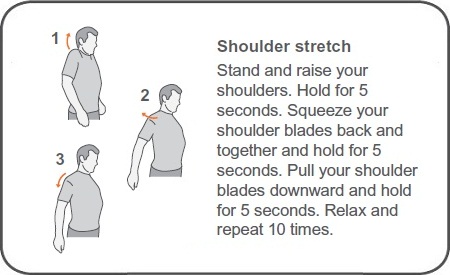
Dr Kalpana Kamdar, a physiotherapist from Ahmedabad, warns that slumping and slouching for long hours while sitting can result in severe shoulder dysfunction, unbearable pain, inflammation and restriction of movement in the neck, shoulders and upper back.
Case Study
A 65-year-old male patient, retired from a clerical job, came with diffused pain in and around the left shoulder joint and loss of movement due to pain and weakness but no stiffness in the shoulder. He had first been treated as a case of frozen shoulder with medication and electrotherapy for pain relief. However, the routine exercise protocol for frozen shoulder further aggravated his pain. A sonography report of the shoulder showed tear in the rotator cuff tendons following which he was advised surgery for repairing the tear. He was treated at my clinic with exercises for activation and strengthening of the inhibited muscles, Short Wave Diathermy for pain relief and exercises for Posture Correction. Further, he was given ergonomic advice for posture alteration. Within four weeks, he had achieved full range of movement at the shoulder with NO PAIN and improvement in strength.
Important: He did not have frozen shoulder as diagnosed first because he had no stiffness in the shoulder. He had full range movement but they were very painful. So the treatment for the same did not work.
His sonography also showed rotator cuff tear which was due to faulty mechanics of the shoulder complex resulting from bad posture.
Related: Why Diabetes increases the risk of Frozen Shoulder. Treatment and Prevention.
Slouching for long hours
How does the shoulder get affected due to slouching or slumping for long hours while sitting in office or working on a computer or using a gadget, as in the case of my patient?
The muscles of the neck and upper back, responsible for keeping the head, neck, upper back and hence the whole spine in an aligned upright position, are actually overworked and in sustained contraction in trying to bring your back in a correct position, the muscles in front of the chest.
The pectoral muscles (chest muscles) also become short and tight. They eventually develop painful trigger points leading to generalized aching pain and restriction of movement in the neck, shoulders and upper back. The muscles in the mid-back (Rhomboids, Lower Trapezius and also the Serratus anterior) become inhibited and weak resulting in poor scapula-humeral mobility.

Source: Human Kinetics 2010
The shoulder muscles (Deltoids) roll forward and abnormal stresses are experienced limiting movement at the shoulder. The ligaments around at the joint also will be placed under excessive stress making overhead activities very difficult.
All this results in forward rotation, protraction of the shoulder blades (Scapulae) resulting in impingement of the tendons of the rotator cuff as they pass through the sub acromial space (the passage beneath the collar bone); which become irritated and inflamed also eventually leading to tears in the tendons, as in the case of my patient.

Source: Pinterest
Joints of the Cervical Spine also undergo wear and tear due to the compressive forces because of the forward head posture and the joint cartilage is exposed to repetitive stress and trauma.
There would also be an increase in the thoracic kyphosis, further reducing mobility. A vicious circle thus begins with weakness, tight muscles, accelerated degeneration, wear and tear of bone and soft tissues leading to pain, inflammation and restricted mobility and vice versa.
All this ultimately results in various conditions like:
- Headaches due to the tension where the neck and upper back muscles join the skull (occiput).
- Pain and stiffness in the neck (a.k.a. Cervical Spondylitis)
- Pain and loss of movement in the shoulder (Impingement syndrome and Rotator cuff involvement many a times misdiagnosed as” Frozen Shoulder”)
- Nerve root impingement leading to Pain, Tingling, Numbness, etc in the upper arm, elbow, wrist, thumb (many a times again misdiagnosed as Tennis elbow, Carpal Tunnel Syndrome, De Quervain’s tenosynovitis)
- There is also mixed evidence to suggest temporo-mandibular joint (a.k.a. TMJ) or jaw problems due to the tension in the muscles around the neck and the upper back.
Treatment
- Trigger point and myofascial release.
- Stretching of tight muscles and relaxing the muscles that are in spasm.
- Strengthening exercises for the weak mid back muscles
- Education and understanding of correct static and dynamic postures (posture at rest which include the sitting, sleeping and standing and postures while moving)
- Understanding of workplace ergonomics for prevention of the effects of wrong habits and good health.
Tips to Prevent Shoulder Dysfunction
1. This stretch can help prevent shoulder dysfunction. Can do this every 30-45 minutes

Source:http://www.arthritisresearchuk.org
2. Change your position frequently. Don't stay in any one posture for too long. So get out of your chair every half an hour or so...walk around...stretch.
3. Adjust the computer or monitor height in such a way that the top of the monitor is just below your eye level.
(This is the third article of a series on good posture and good health by Dr. Kalpana Kamdar Clinical Physiotherapist practising for more than 20 years at the Swayam Physiotherapy Clinic, in Ahmedabad, India.)
More by Dr. Kalpana Kamdar:
Why do I Wake Up With a Stiff Neck?
What is the Root Cause of your Pain?






